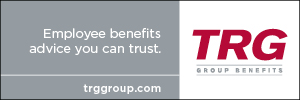Bill Jensen: Getting Back To Basics
Harvard Business Review, CNBC and Fast Company have called Bill Jensen today’s foremost expert on work complexity, helping people to do less and accomplish more. He’s an internationally acclaimed bestselling author and speaker who is known for extremely useful content, and his passion for working smarter, not harder. In 1992 Bill launched an ongoing study, ‘The Search for a Simpler Way’, and has interviewed and surveyed over 500,000 people around the world about what really matters and how they get everything done. That research has supported all of his books.
Q: In your experience, what are the most common causes for stemmed productivity in the workplace, and how does this effect retention?
Let’s jump past the part where I will second everything that everybody else would say: cutting staff to the bone; overload due to Do More With Less; poor management or leadership or cultural practices, etc….
The biggest cause: bad design. Specifically: corporate-centered design. See, most everything any company creates to enhance productivity — your processes, procedures, tools, reporting structures, checklists, etc. — is always designed to meet the company’s needs, to help the company succeed. But rarely do those productivity efforts work backwards from the needs of the individuals doing the work. That’s called avoiding being user-centered — in this case, the users of all these things are the workforce.
What’s funny (in a horribly sad way) is that companies already “get” the idea of being user-centered. That’s how they succeed in selling to customers, the users of their products and services. Any company that sells tech stuff, for example, does tons of usability studies. Amazon will watch people click on an e-button for hours and then decide to move it two centimetres to the left to enhance click-throughs! Anyone selling to aging Boomers does research into how easy or hard their bottles are to open or their handles are to turn. But do the same kind of working backwards from the needs of individuals when they actually work for you?! Nahhhh! Bah, humbug. “We’ll just tell them to work harder.”
Result: When people are forced to work harder, and their gut is telling them that there has to be an easier way, they are going to look for the exits as soon as the economy will permit them to do so!
Q: Are there any truly simple solutions for HR professionals seeking to realize the potential of the People, Passion, Profit equation?
One simple thing: The Golden Rule. Treat your workforce the way you would like to be treated. Have any of you actually used any of the forms and procedures that HR forces your workforce to use? Egads, no wonder why passion and engagement are tanking!
Second simple thing: communicate, communicate, communicate – but only after you listen, listen, listen, listen, listen, listen. (We were given two ears and one mouth…listening and talking should always be done in the same 2:1 proportions!) Stop being a shill for Corporate when you communicate, and start working backwards from what the workforce told you they needed. From the research I’ve done, most of the workforce feels that most of HR should be fired! Because they know that HR is Corporate’s advocate, not theirs. Be the workforce’s advocate! Speak up for their needs. If not you, who?
Q: How do the new tools of communication impact an organization’s ability to both recruit and retain?
If your strategies are sound and you truly are listening to your workforce and responding to their needs, then the new tools help you do a much better job of tailoring to each individual’s needs. If not…the new tools just help you spread crap faster and more efficiently — a digitized manure spreader.
Q: You define simplicity as a key competitive advantage. Why is the adoption process of this perspective so challenging for some companies?
To answer that, we need to first ask another question: Simpler for whom?
I have asked tens of thousands of people who gets the most attention paid to simplifying things for them. Answer: Executives. And who gets the least attention paid to simplifying things for them? The workforce.
It all comes down to intent. Apple, Google and Zappos, for example, are not simplicity-challenged. They simplify things for their customers, as well as for the people who are meeting those customers’ needs. But most companies… (and I haven’t just researched this… this is what I’ve experienced hundreds of times in closed-door sessions with senior execs) …define simplicity as “Make it easier for me (the executive) to get my people to execute our strategy.”
The adoption process is only challenging because the answer to ‘Simpler For Whom?’ is usually focused on a very small number of people…and almost always they reside in C-suite offices.
Now, if HR becomes a workforce advocate, and starts having tough-love conversations with C-suite executives about what needs to be done to make the workforce more productive and to retain them…well…those conversations would truly make a difference! And truly build a competitive advantage for your company!
Bill Jensen is presenting Becoming a Benevolent Hacker at BC HRMA’s 49th Annual Conference in Vancouver April 14-15, 2011. For more information on this and other sessions, please refer to www.bchrma.org/conf2011.
(PeopleTalk: Spring 2011)








